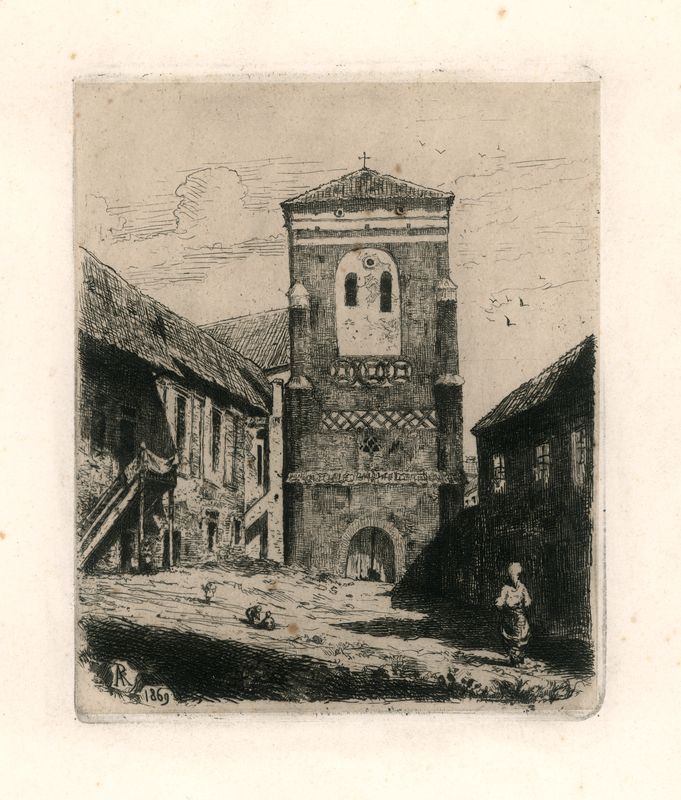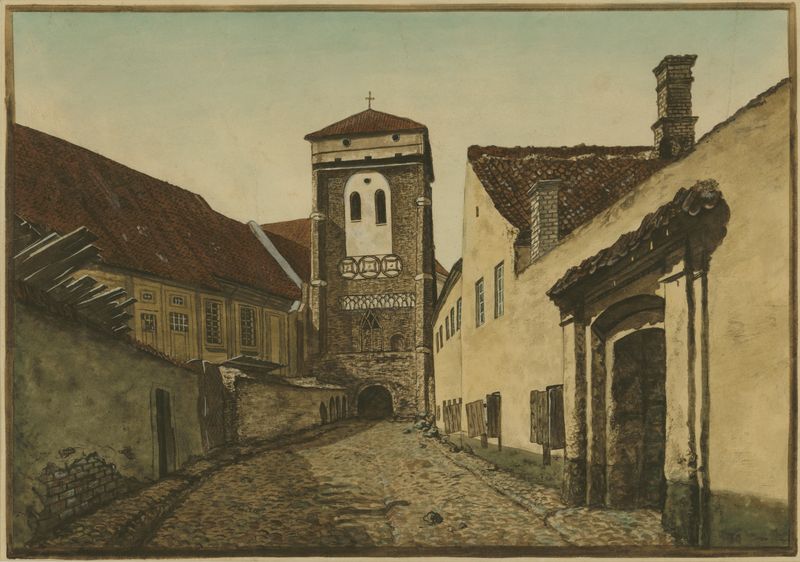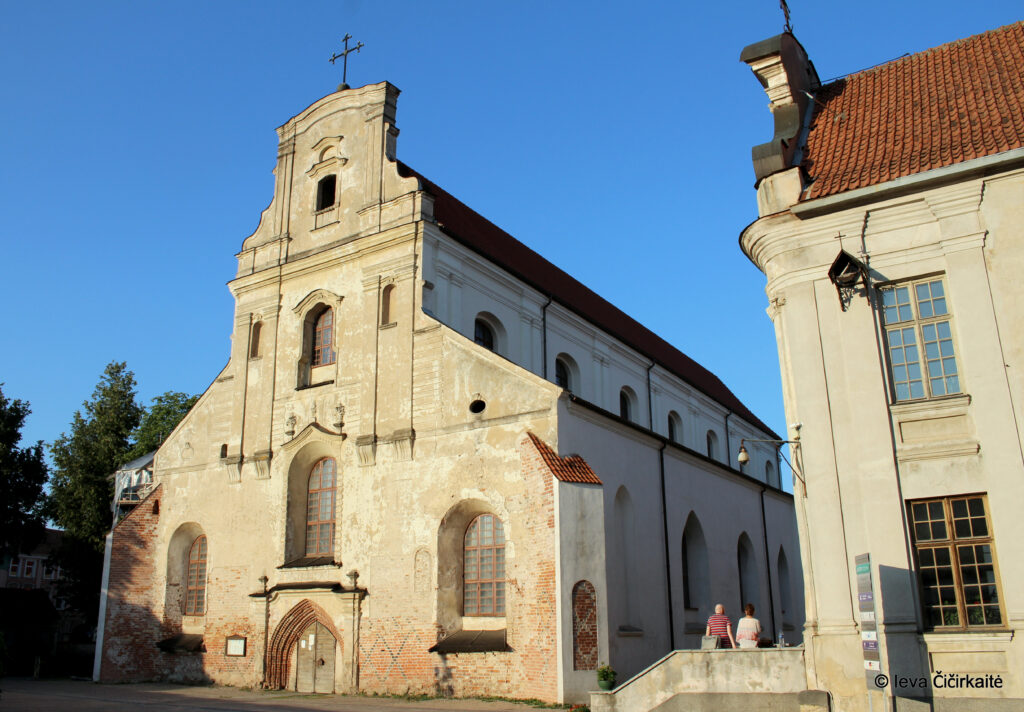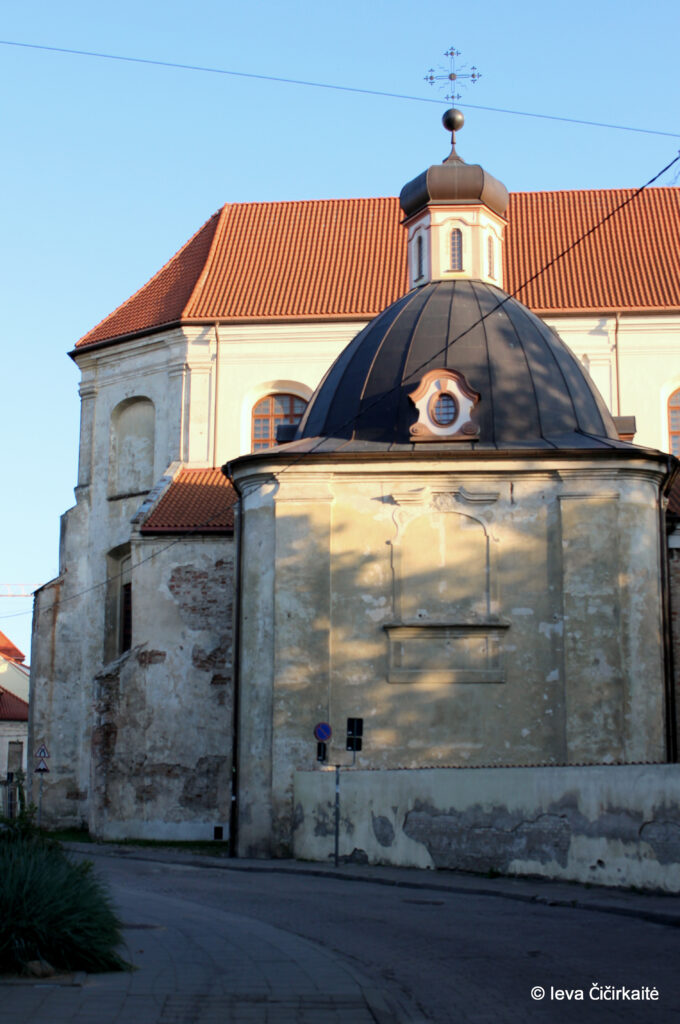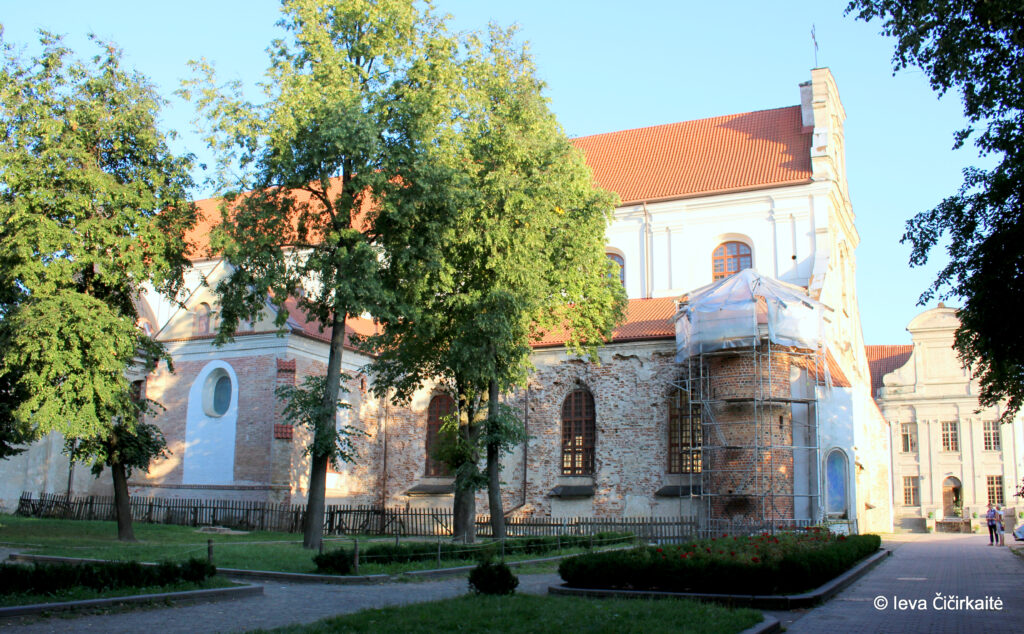Once, a considerable part of the city between Trakai, Kėdainiai and Lyda streets belonged to the Franciscan monks and formed a sort of separate city. The monastery formed a jurisdicion—a part of the city held by an individual owner—with its own vicar and judge, and was governed by a Franciscan guard.
It is the oldest monastery in Lithuania, its construction started back in the time of Gediminas in 1334. The order of Franciscan mendicant monks, who nurtured poverty, asceticism and obedience, occupies a special place in the history of Vilnius. The appearance of the brothers of this order in Vilnius is surrounded by a mysterious legend, which tells about the killing of fourteen Franciscan martyrs in 1335. A sculpture of the Three Crosses now stands in the place where they were martyred.
in 1387 in the document, Grand Duke Jogaila mentions a "Franciscan house" that was on the site of the current monastery.
1996-1997 during the conducted research, it was established that the site of the current church was built in the XNUMXth century. medieval brick church or chapel. Burials earlier than this chapel have also been discovered. This is the XNUMXth century. help - XIV century Graves of the inhabitants of the XNUMXst quarter. So even before the beginning of the first Franciscan brick construction in the XNUMXth century. at the end, a cemetery was operating in this place. Buried according to Christian traditions. This allows us to assume that this was one of the earliest Catholic places in Vilnius.
In 1390, after burning the city, the Crusaders attacked Vilnius Castle. Apparently, the Franciscan buildings also burned down. 1421 the new church was completed, and the monastery at the same time. XNUMXth century all the monks died during the plague. For some time the monastery stood empty. XNUMXth and XNUMXth centuries the church and the monastery were ravaged by fires. Few valuable fragments of the monastery's architecture, older than the XNUMXth century, have survived, and the church is somewhat more.
Four two-story walls surround a grand rectangular enclosed courtyard. Contrary to what is traditionally imagined, this monastery was neither ascetic nor gloomy. XNUMXth century architects took care of the beauty and comfort of the premises. At that time, with the spread of literacy, large windows began to be designed to provide enough light for reading. In addition, efforts are made to ensure that the premises are well ventilated. Although there is no unnecessary luxury in the Franciscan convent, it was spacious, bright, pleasant to live in. However, it is interesting that the windows of the corridor open into the busy church yard, while the windows of the monks' cells face the inner, closed courtyard, so the seriousness of the monks is thought of.
The Franciscan monastery was famous as an important intellectual center of Vilnius, the strongest XNUMXth century was active here. school, printing house, monks organized public religious debates for the townspeople and nobles of Vilnius, as well as conferences of theological content. Great attention is given to science and art, especially music. One of the most important requirements for those joining the order was the inclination and talent for music.
1864th century in the parlatory of the monastery - the hall where visitors were received - St. Statue of the Immaculate Conception of the Virgin Mary. Soon she became famous in the city for her graces. Pregnant women or women who want to have a baby began to pray to the intercession of the Mother of God image. The piety of the people of Vilnius to the image of the Immaculate Conception in the Franciscan Monastery did not disappear even after XNUMX. the monastery and the church were closed. The tsar's officials were angered by the gatherings of people in the churchyard, in front of the monastery. The city authorities ordered the sculpture to be destroyed, but the Catholic employees of the institutions that operated in the monastery building made sure that the niche where the statue remained stood was nailed and plastered.
The people of Vilnius did not forget the statue. In 1905, after the tsarist authorities abolished the major religious restrictions, permission was obtained to build a chapel in the former monastery. Respect for the statue, known in Vilnius as the "White Lady", has recovered again. In 1935, after taking back the church, the Franciscans moved the statue to the church and installed St. in the Lawrence chapel. In the Soviet years, the statue was hidden again in the same way as a few decades ago - by covering and plastering the niche of the chapel where it stood.
in 1863 the Franciscans actively helped the participants of the uprising, so in 1864 the monastery was taken from them, and the church was closed and turned into a repository for archive funds. The assets and inventory of the church altars were transferred to other churches, mainly to Vilnius St. John's Church and the Archcathedral; part of the Franciscan heritage is irretrievably lost.
The buildings of the monastery were rented to various organizations and individuals. A pawn shop, an auction, a labor exchange, and a secret were located here police, a charitable canteen, a hostel, a children's shelter, city board archive and inventory warehouses, apartments for city board employees, a weapons warehouse were equipped. in 1863 the participants of the uprising were imprisoned in the premises of the monastery. In part of its premises in 1908-1924. the first two-class Lithuanian school operated in Vilnius.
There is a chapel built at the expense of Mykolas Suzin, which was used for armory, near Trakai street. During the Soviet era, the chapel was used as a souvenir shop. Foreign guests used to shop there. Understand - from the Soviet Union.
Many famous people lived in the premises of the monastery, including Jonas Basanavičius and Juzef Montvilas.
Various institutions are now located here.


